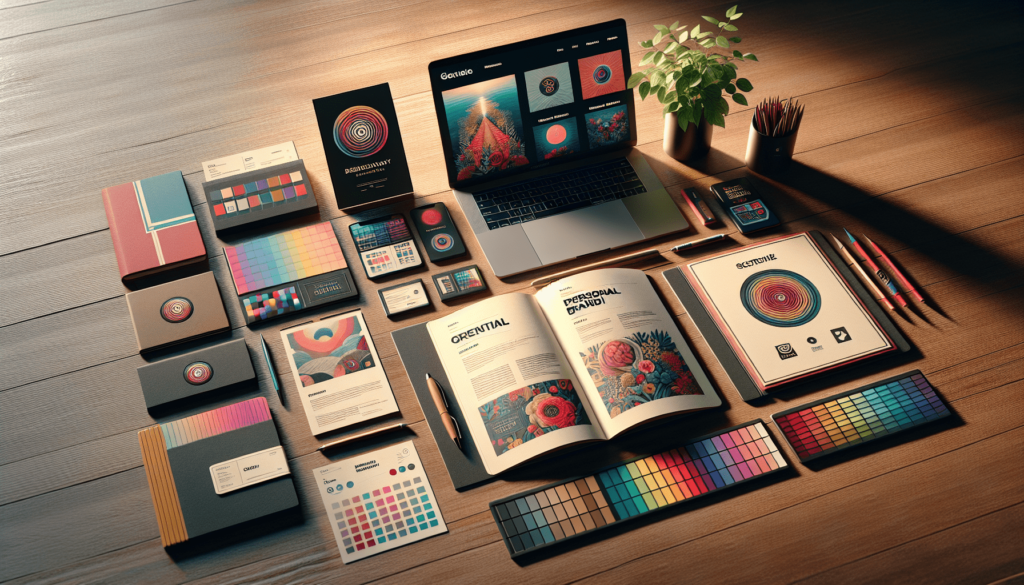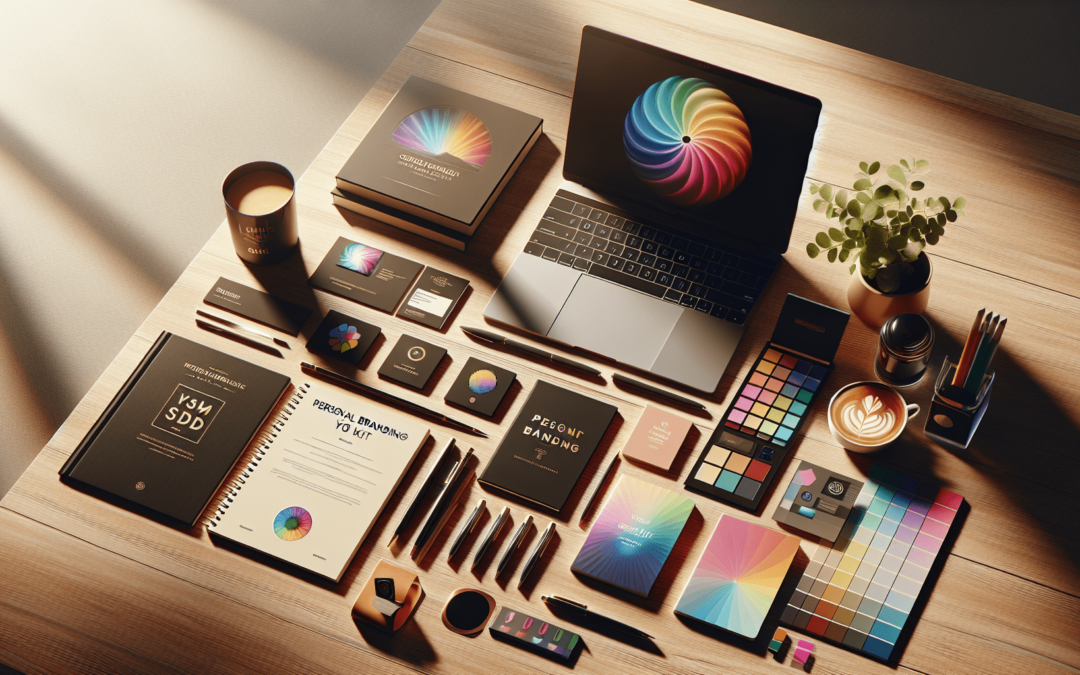Have you ever thought about how your personal brand influences your professional opportunities?
Creating a strong personal brand can set you apart from others in your field, and it is more important now than ever. A comprehensive personal branding kit can empower you to communicate your values, skills, and uniqueness effectively. In this guide, you’ll discover how to unlock success with a personal branding kit that highlights who you are and what you do.

What is a Personal Branding Kit?
A personal branding kit is a collection of resources and tools that represent your personal brand. It includes everything from your logo to your social media profiles and even your resume. The goal is to create a cohesive image that reflects your ethos. This kit helps you articulate your value proposition clearly and attract opportunities that resonate with your vision.
Why is a Personal Branding Kit Important?
Your personal brand is an asset in today’s competitive landscape. It allows you to create a narrative around your professional identity. By having a well-defined branding kit, you can:
- Stand out in a crowded job market
- Build credibility and trust
- Create memorable impressions
- Attract your target audience, whether they are employers or clients
Key Components of a Personal Branding Kit
To create an effective personal branding kit, there are several essential components to consider. Each element plays a critical role in presenting your brand.
1. Personal Logo
A personal logo is vital for visual branding. It’s your calling card in a world filled with noise. Hiring a graphic designer from a reputable team, like those at Kirkgroup, can help you craft a logo that encapsulates your identity and leaves a lasting impression.
2. Professional Headshot
In today’s digital world, your profile image is often the first thing people see. Invest in a high-quality, professional headshot to convey approachability and professionalism. This should ideally reflect your personality and the industry you work in.
3. Business Cards
Even in the digital age, business cards remain a fundamental tool. They serve as a tangible representation of your brand. A well-designed business card gives people a way to remember you, whether at a networking event or a casual encounter.
4. Résumé and Cover Letter Templates
Your resume isn’t just a list of your qualifications; it’s a narrative about your career trajectory. Create templates that align with your personal branding. An aesthetically pleasing and clearly formatted resume enhances your chances of catching an employer’s eye.
5. Social Media Profiles
Your social media presence should reflect your professional persona. Optimize your profiles on platforms such as LinkedIn, Instagram, and Twitter. This means using consistent imagery, appropriate keywords, and well-crafted bios that articulate your brand message.
6. Personal Website or Portfolio
In an increasingly digital world, having a personal website acts as your online portfolio. It allows you to showcase your work and provide deeper insights into your professional journey. You can manage and control the content, presenting it in a way that tells your story.
7. Content Strategy
Establishing a content strategy is essential for maintaining your personal brand’s visibility. Decide what type of content aligns with your brand and how often you wish to post. Creating helpful and insightful content can position you as an expert in your field.
8. Elevator Pitch
An elevator pitch is a short, persuasive summary that introduces you and your brand. It should encapsulate what you do, your unique strengths, and what you want to achieve. Practicing your elevator pitch will prepare you for any opportunity to showcase your brand.
Steps to Create Your Personal Branding Kit
Creating a personal branding kit may seem daunting, but breaking it down into manageable steps can help.
Step 1: Define Your Brand Identity
Understanding who you are and what you want to communicate is the first step. Reflect on your values, passions, strengths, and unique skills. Answer these questions:
- What do you stand for?
- What makes you different?
- What message do you want to convey?
Step 2: Gather Visual Elements
Choose color schemes, fonts, and design elements that resonate with your brand identity. Consistency across all visual platforms improves recognition. Your logo, website, and marketing materials should have a unified look and feel.
Step 3: Write Your Story
Your personal story is crucial for your branding. Utilize storytelling techniques to describe your journey, challenges, and milestones. You want potential employers or clients to connect with your experience personally.
Step 4: Build Your Online Presence
Create or optimize your social media profiles and personal website. Ensure they reflect your professional image and are regularly updated. Follow industry practices on how to present yourself effectively online.
Step 5: Network and Promote
Once your branding kit is in place, start sharing it. Attend networking events, join online groups, and leverage social media to promote your brand. Remember, networking is about building authentic relationships, not just selling yourself or your services.
Step 6: Monitor and Adjust
After implementing your personal branding, it’s important to monitor its effectiveness. Gather feedback and analyze how well you’re communicating your message. Be open to making adjustments and evolving your brand as necessary.
How to Effectively Utilize Your Personal Branding Kit
Having your branding kit ready is just the beginning. You’ll need to utilize it effectively.
Tips for Social Media
- Be Consistent: Use the same profile picture and bio across all platforms.
- Engage Your Audience: Share content that resonates with your followers. Ask open-ended questions to encourage interaction.
- Show Your Personality: Don’t be afraid to showcase your interests outside of work. It humanizes your brand and helps form connections.
Networking Tips
- Be Authentic: Authenticity attracts people to your brand. Share your real experiences and stories.
- Follow Up: After meeting someone new, remember to send a follow-up message. A simple “I enjoyed our conversation” can go a long way.
Content Creation Ideas
- Blogging: Share insights related to your field. This establishes you as a thought leader.
- Video Content: Create informative videos or tutorials. Video content greatly increases engagement.
- Podcasts: Launch a podcast discussing topics that interest you and your audience. It’s a unique way to express your expertise.
Measuring Success
To ensure your personal branding kit is effective, regularly check your progress. Use the following metrics:
| Metric | How to Measure |
|---|---|
| Engagement Rate | Track comments, shares, and likes on social media posts. |
| Website Traffic | Use Google Analytics to monitor visitors to your site. |
| Career Opportunities | Keep a record of job offers, leads, and networking connections resulting from your branding efforts. |
The Role of Graphic Design in Personal Branding
Graphic design is a critical element of personal branding. It shapes the way your audience perceives your brand immediately. By engaging a professional design team, such as the Kirkgroup, in your branding journey, you can achieve a polished and professional image.
Benefits of Professional Graphic Design
- Cohesive Branding: Professional designers can deliver visual elements that blend well together, ensuring consistent branding.
- Increased Credibility: High-quality design instills trust and conveys that you value professionalism.
- Unique Representation: Designers help you stand out with customized visuals that don’t look like everyone else.
Conclusion: The Power of a Personal Branding Kit
Your personal branding kit is an investment in your professional future. It empowers you to take charge of how you present yourself and your skills to the world. With the right tools and strategies, you can create a compelling personal brand that resonates with your target audience.
By putting in the effort to build a comprehensive branding kit, you position yourself for long-term success. Remember, your brand is not just about how you look; it’s about how you make people feel and how you communicate your unique value. Each component of your branding kit plays a crucial role in weaving together a narrative that becomes your professional identity.
As you embark on this journey, approach it with an open mind and a willingness to adapt. After all, your brand is a reflection of your ever-evolving self. Keep innovating, learning, and growing—your personal brand will naturally shine through.

